Showing 701–710 of 1173 results
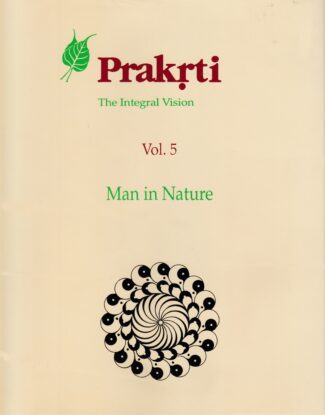
The Fifth Volume, Man in Nature, is a coming together of cultures and disciplines. Enchanting in their own way, the international community of scientists, philosophers, anthropologists, ecologists and artists, share in this volume the myths and cosmology of their respective societies and cultures. There emerges a most meaningful dialogue between those who live with the myths of primordial elements and those who have modified the tools of science to investigate the nature of matter.
PRAKRTI : The Integral Vision explores the concept of the primal Elements (Sky, Air, Fire, Water, Earth, etc.) which has governed and determined the evolution of civilizations and cultures. This 5-volume collection is the outcome of a series of five successive but inter-locked seminars culminating into cross-cultural, multi-disciplinary understanding. The First Volume, Primal Elements: The Oral Tradition, focuses attention on the articulation of cohesive communities communicating with the Elements in continuous unceasing dialogue. To them the nature is not a matter of intellection; it is a question of life here and now. This is manifested in their primary myths and rituals which sacralize nature so that man can live as an integral part of the Universe. The Second Volume, Vedic, Buddhist and Jain Traditions, centres on the texts, probing deep into the Vedic rituals, Upanisadic philosophies and Jyotisa sastra. There is a prodigious consideration of the concept of maha-bhutas in Buddhism and Jainism. It also brings forth the many covergences and divergences of the view-points between and amongst these different streams of Indian thought. The Third Volume, The Agamic Tradition and the Arts, examines systematically the manifestation of the Elements in the Indian arts and their Agamic background. From the different vantage points of the architect, sculptor, painter, musician and dancer, the field is reopened here to discern the structure of the arts at its primal level. Experiences of the transformation of the gross to the subtle and the theories of aesthetics and cultural ecology emerge from such a captivating view-point. The Fourth Volume, The Nature of Matter offers a much-needed critical appraisal of modern scientific concepts with reference to traditional thoughts. It contains invaluable discussion on quantum theory and elementary particles, evolution of living matter, nature and function of matter, scientific philosophy and Buddhist thought, Sankhya theory of matter, ancient and medieval biology, mysticism and modern science, traditional cosmology, matter and medicine, matter and consciousness, etc. The dialogue created between the method of science and the method of speculation is invigorating. The Fifth Volume, Man in Nature, is a coming together of cultures and disciplines. Enchanting in their own way, the international community of scientists, philosophers, anthropologists, ecologists and artists, share in this volume the myths and cosmology of their respective societies and cultures. There emerges a most meaningful dialogue between those who live with the myths of primordial elements and those who have modified the tools of science to investigate the nature of matter. This 5-volume set, first of its kind, produced by the most distinguished specialists in the field, should enjoy a wide readership amongst philosophers of many different persuasions, scientists, theorists of art and culture, particularly ecologists and anthropologists seeking new insights into the phenomena of Nature.

The First Volume, Primal Elements: The Oral Tradition, focuses attention on the articulation of cohesive communities communicating with the Elements in continuous unceasing dialogue. To them the nature is not a matter of intellection; it is a question of life here and now. This is manifested in their primary myths and rituals which sacralize nature so that man can live as an integral part of the Universe.
PRAKRTI : The Integral Vision explores the concept of the primal Elements (Sky, Air, Fire, Water, Earth, etc.) which has governed and determined the evolution of civilizations and cultures. This 5-volume collection is the outcome of a series of five successive but inter-locked seminars culminating into cross-cultural, multi-disciplinary understanding. The First Volume, Primal Elements: The Oral Tradition, focuses attention on the articulation of cohesive communities communicating with the Elements in continuous unceasing dialogue. To them the nature is not a matter of intellection; it is a question of life here and now. This is manifested in their primary myths and rituals which sacralize nature so that man can live as an integral part of the Universe. The Second Volume, Vedic, Buddhist and Jain Traditions, centres on the texts, probing deep into the Vedic rituals, Upanisadic philosophies and Jyotisa sastra. There is a prodigious consideration of the concept of maha-bhutas in Buddhism and Jainism. It also brings forth the many covergences and divergences of the view-points between and amongst these different streams of Indian thought. The Third Volume, The Agamic Tradition and the Arts, examines systematically the manifestation of the Elements in the Indian arts and their Agamic background. From the different vantage points of the architect, sculptor, painter, musician and dancer, the field is reopened here to discern the structure of the arts at its primal level. Experiences of the transformation of the gross to the subtle and the theories of aesthetics and cultural ecology emerge from such a captivating view-point. The Fourth Volume, The Nature of Matter offers a much-needed critical appraisal of modern scientific concepts with reference to traditional thoughts. It contains invaluable discussion on quantum theory and elementary particles, evolution of living matter, nature and function of matter, scientific philosophy and Buddhist thought, Sankhya theory of matter, ancient and medieval biology, mysticism and modern science, traditional cosmology, matter and medicine, matter and consciousness, etc. The dialogue created between the method of science and the method of speculation is invigorating. The Fifth Volume, Man in Nature, is a coming together of cultures and disciplines. Enchanting in their own way, the international community of scientists, philosophers, anthropologists, ecologists and artists, share in this volume the myths and cosmology of their respective societies and cultures. There emerges a most meaningful dialogue between those who live with the myths of primordial elements and those who have modified the tools of science to investigate the nature of matter. This 5-volume set, first of its kind, produced by the most distinguished specialists in the field, should enjoy a wide readership amongst philosophers of many different persuasions, scientists, theorists of art and culture, particularly ecologists and anthropologists seeking new insights into the phenomena of Nature.

The Second Volume, Vedic, Buddhist and Jain Traditions, centres on the texts, probing deep into the Vedic rituals, Upanisadic philosophies and Jyotisa sastra. There is a prodigious consideration of the concept of maha-bhutas in Buddhism and Jainism. It also brings forth the many covergences and divergences of the view-points between and amongst these different streams of Indian thought.
PRAKRTI : The Integral Vision explores the concept of the primal Elements (Sky, Air, Fire, Water, Earth, etc.) which has governed and determined the evolution of civilizations and cultures. This 5-volume collection is the outcome of a series of five successive but inter-locked seminars culminating into cross-cultural, multi-disciplinary understanding. The First Volume, Primal Elements: The Oral Tradition, focuses attention on the articulation of cohesive communities communicating with the Elements in continuous unceasing dialogue. To them the nature is not a matter of intellection; it is a question of life here and now. This is manifested in their primary myths and rituals which sacralize nature so that man can live as an integral part of the Universe. The Second Volume, Vedic, Buddhist and Jain Traditions, centres on the texts, probing deep into the Vedic rituals, Upanisadic philosophies and Jyotisa sastra. There is a prodigious consideration of the concept of maha-bhutas in Buddhism and Jainism. It also brings forth the many covergences and divergences of the view-points between and amongst these different streams of Indian thought. The Third Volume, The Agamic Tradition and the Arts, examines systematically the manifestation of the Elements in the Indian arts and their Agamic background. From the different vantage points of the architect, sculptor, painter, musician and dancer, the field is reopened here to discern the structure of the arts at its primal level. Experiences of the transformation of the gross to the subtle and the theories of aesthetics and cultural ecology emerge from such a captivating view-point. The Fourth Volume, The Nature of Matter offers a much-needed critical appraisal of modern scientific concepts with reference to traditional thoughts. It contains invaluable discussion on quantum theory and elementary particles, evolution of living matter, nature and function of matter, scientific philosophy and Buddhist thought, Sankhya theory of matter, ancient and medieval biology, mysticism and modern science, traditional cosmology, matter and medicine, matter and consciousness, etc. The dialogue created between the method of science and the method of speculation is invigorating. The Fifth Volume, Man in Nature, is a coming together of cultures and disciplines. Enchanting in their own way, the international community of scientists, philosophers, anthropologists, ecologists and artists, share in this volume the myths and cosmology of their respective societies and cultures. There emerges a most meaningful dialogue between those who live with the myths of primordial elements and those who have modified the tools of science to investigate the nature of matter. This 5-volume set, first of its kind, produced by the most distinguished specialists in the field, should enjoy a wide readership amongst philosophers of many different persuasions, scientists, theorists of art and culture, particularly ecologists and anthropologists seeking new insights into the phenomena of Nature.
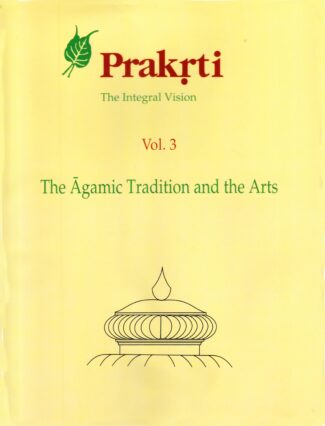
The Third Volume, The Agamic Tradition and the Arts, examines systematically the manifestation of the Elements in the Indian arts and their Agamic background. From the different vantage points of the architect, sculptor, painter, musician and dancer, the field is reopened here to discern the structure of the arts at its primal level. Experiences of the transformation of the gross to the subtle and the theories of aesthetics and cultural ecology emerge from such a captivating view-point.
PRAKRTI : The Integral Vision explores the concept of the primal Elements (Sky, Air, Fire, Water, Earth, etc.) which has governed and determined the evolution of civilizations and cultures. This 5-volume collection is the outcome of a series of five successive but inter-locked seminars culminating into cross-cultural, multi-disciplinary understanding. The First Volume, Primal Elements: The Oral Tradition, focuses attention on the articulation of cohesive communities communicating with the Elements in continuous unceasing dialogue. To them the nature is not a matter of intellection; it is a question of life here and now. This is manifested in their primary myths and rituals which sacralize nature so that man can live as an integral part of the Universe. The Second Volume, Vedic, Buddhist and Jain Traditions, centres on the texts, probing deep into the Vedic rituals, Upanisadic philosophies and Jyotisa sastra. There is a prodigious consideration of the concept of maha-bhutas in Buddhism and Jainism. It also brings forth the many covergences and divergences of the view-points between and amongst these different streams of Indian thought. The Third Volume, The Agamic Tradition and the Arts, examines systematically the manifestation of the Elements in the Indian arts and their Agamic background. From the different vantage points of the architect, sculptor, painter, musician and dancer, the field is reopened here to discern the structure of the arts at its primal level. Experiences of the transformation of the gross to the subtle and the theories of aesthetics and cultural ecology emerge from such a captivating view-point. The Fourth Volume, The Nature of Matter offers a much-needed critical appraisal of modern scientific concepts with reference to traditional thoughts. It contains invaluable discussion on quantum theory and elementary particles, evolution of living matter, nature and function of matter, scientific philosophy and Buddhist thought, Sankhya theory of matter, ancient and medieval biology, mysticism and modern science, traditional cosmology, matter and medicine, matter and consciousness, etc. The dialogue created between the method of science and the method of speculation is invigorating. The Fifth Volume, Man in Nature, is a coming together of cultures and disciplines. Enchanting in their own way, the international community of scientists, philosophers, anthropologists, ecologists and artists, share in this volume the myths and cosmology of their respective societies and cultures. There emerges a most meaningful dialogue between those who live with the myths of primordial elements and those who have modified the tools of science to investigate the nature of matter. This 5-volume set, first of its kind, produced by the most distinguished specialists in the field, should enjoy a wide readership amongst philosophers of many different persuasions, scientists, theorists of art and culture, particularly ecologists and anthropologists seeking new insights into the phenomena of Nature.
भारतवर्षीय दर्शन परम्परा में अनेक सम्प्रदाय, पद्धतियां, चिन्तन–मार्ग और साधना के आयाम हैं। वे सभी पद्धतियाँ मुख्यत: तीन ग्रन्थाें पर आधारित हैं। जिनमें कुमारिल भट्ट का श्लाेकवार्त्तिक, धर्मकीर्ति का प्रमाणवार्त्तिक, तथा गङ्गेश उपाध्याय का तत्त्वचिन्तामणि हैं। वे तीन ग्रन्थ आज तक की भारतीय दर्शन परम्परा के प्रतिनिधि ग्रन्थ हैं और तीन मार्गाें के रूप में स्थापित हैं। हम कुछ भी चिन्तन, लेखन या विचार करते हैं ताे वे इन तीनाें में से किसी एक मार्ग में स्वतः ही चले आते हैं।
धर्मकीर्ति का यह प्रमाणवार्त्तिक ग्रन्थ अत्यन्त कठिन हाेने से इस ग्रन्थ का अब तक किसी भी भाषा में पूर्ण रूप से अनुवाद नहीं हाे पाया है। इसके कुछ श्लाेक अंग्रेज़ी में अनुदित हैं ताे कुछ हिन्दीए फ्रेंचए जर्मन और नेपाली में भी अनुदित हुए हैं। किन्तु अब तक पूर्ण ग्रन्थ का और इसकी किसी भी टीका का पूर्ण अनुवाद न हाेना इसकी भाषा का कठिन हाेना, विचाराें का गूढ़ हाेना तथा अत्यन्त दुरुह प्रकरणाें का हाेना ही कारण रहा है। कुछ विदेशी विद्वान् इसका अंग्रेज़ी में अनुवाद करने के लिए भी लगे हुए हैं किन्तु बीसाें वर्षाें के बाद भी वे इसे पूरा नहीं कर सके हैं। अतः यह हिन्दी अनुवाद अपने आप में प्रथम पूर्ण अनुवाद और सम्पादन है।
प्रस्तुत ग्रन्थ में पाँच प्रकरण हैं – 1. प्रमाण सिद्धि परिच्छेद, मनाेरथनन्दी के साथय; 2. प्रत्यक्ष परिच्छेद, मनाेरथनन्दी के साथ; 3. स्वार्थानुमान परिच्छेद, स्वाेपज्ञवृत्ति सहित (जाे कि धर्मकीर्ति की अपनी ही वृत्ति है); 4. स्वार्थानुमान परिच्छेद, मनाेरथनन्दी के साथ; और 5. परार्थानुमान परिच्छेद, मनाेरथनन्दी के साथ।
इस ग्रन्थ में प्रथम बार समग्र प्रमाणवार्त्तिक का उपस्थापन किया गया है। इस में स्वयं धर्मकीर्ति की स्वाेपज्ञवृत्ति स्वार्थानुमान परिच्छेद में वर्णित है जिसका अनुवाद सहित उपस्थापन पाँचवें परिच्छेद के रूप में रखा गया है।
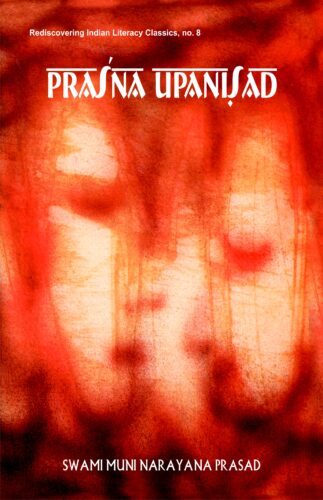
This commentary unravels the riddle-like statements and contexts of the Prasna Upanisad in the light of the meta-logic of Yogic buddhi to study deeply the Brahmavidya philosophy and thus the problem of origin of beings.
In Upanishads is articulated not only the quintessence of spiritual wisdom, but also the remarkable philosophical genius of the classical Hindu mind. Owing, however, to their complexity, metaphor, and even obscurity, Upanishadic writings have been endlessly debated, discussed and written upon, more specially since Shankaras time. Swami Narayana Prasads commentary is yet another valuable addition to the existing literature attempting, as it does, to rationally unlock the metaphysical subtleties of Prashna Upanishad with the master-key handed down to him in the disciplic succession of Sri Narayana Guru. Prashna Upanishad offers an enlightened exposition of brahmavidya: knowledge of the Absolute/Supreme Reality. In an aptly thought-out dialectical situation, it offers a threadbare discussion of six questions which, centreing around procreation/origin of beings, prana: the most vital life-sustaining principle, functional states of the Self (purusha), significance of meditating on AUM lead to the finality of Vedantic wisdom: the sublimity of non-dual Reality: the param purusha of sixteen kalas.
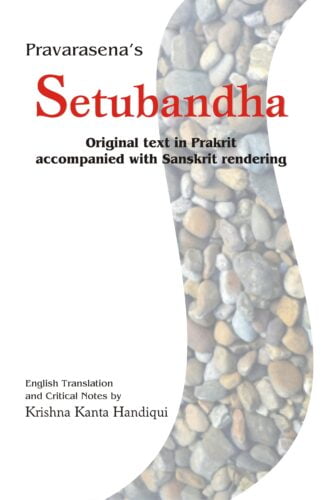
Prof. K.K. Handiqui’s English translation of Setubandha, with detailed introduction and notes, is a monumental work in Prakrit Mahakavyas. It is an onerous task with amazing accuracy and analytical acumen. This critical translation recovers and clarifies the original meanings, Pravarasena’s intentions and implications of poetic expression in Setubandha.
Literary traditions of Sanskrit and Prakrit were highly synchronized for the last two millennia, giving a fillip to arts, cultures and literary creativity. Pravarasena’s Setubandha (or Ravanavaho), a fifth-century composition and the first Mahakavya in Prakrit, is an excellent example of this synchronization, and it has exercised unmistakable influence on Bharavi and Magha.
This volume, Prof. K.K. Handiqui’s English translation of Setubandha with detailed introduction and notes, is a monumental work of the past century in Prakrit Mahakavyas. The author has undertaken this onerous task with amazing accuracy and analytical acumen. In this critical translation, Prof. Handiqui recovers and clarifies the original meanings, Pravarasena’s intentions and implications of poetic expression in Setubandha. While doing so, he has consulted vast mass of Sanskrit commentaries, without compromising his own authority. Therefore it brings to one’s attention Pravarasena’s meticulous style and his use of Prakrit language. This is the first comprehensive edition of Setubandha that includes the original text in Prakrit with its chaya in Sanskrit, a complete translation in English with exhaustive notes.
This scholarly title should invoke keen interest among the academia of Sanskrit and Prakrit, students and researchers, as it represents a significant phase in the development of Kavya poetry, after Kalidasa.
Precognitive dreams appear to predict the future through a sixth sense. Historically, there are a lot of references to precognitive dreams responsible for great discoveries and showcasing big happenings. This volume is an attempt to illuminate and rediscover precognition in dreams in a different perspective of investigation in the light of Kashmir Saivism about reality and consciousness.
In the process, the book introduces readers to dreams and consciousness, underlining evidences, references and descriptions of the phenomenon. To enlighten one on the concept of precognition on the basis of reflectionism, it illustrates the Pure and Reflected Consciousness, and how one attains spiritual powers like precognition through japa, dana, tapa, puja and so on, based on the findings from Tantraloka and Pratyabhijnasastra. Further, it surveys the complete philosophical physiology of precognitive dreams with respect to concepts like pramata, prameya and pramana.
While establishing a uniform principle lying in the back of precognition, it lets future scope for investigation on precognition and the myssteries of this phenomenon, giving the book a high referral value to all in the field of psychology and parapsychology.
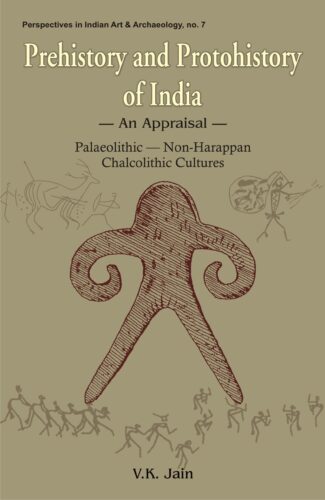
This monograph presents, in a concise but comprehensive manner, a syncretic view of the latest information on various aspects such as tools and technologies, settlement and subsistence patterns, ecological background and distributional configuration in respect of the Stone Age and the Chalcolithic Cultures outside the Harappan Zone. The Megalithic Cultures of peninsular India and the Deccan too find a place in the book
Fresh excavations, new dating techniques and ever-growing conceptual frameworks since 1950 have greatly reshaped our perspective on Prehistory and Protohistory of the Indian subcontinent. This monograph, which is primarily aimed to serve as a starter for the undergraduate and postgraduate students, presents, in a concise but comprehensive manner, a syncretic view of the latest information on various aspects such as tools and technologies, settlement and subsistence patterns, ecological background and distributional configuration in respect of the Stone Age and the Chalcolithic Cultures outside the Harappan Zone. The Megalithic Cultures of peninsular India and the Deccan too find a place in the book. A glossary of the terms used frequently in archaeology as well as maps, line-drawings and explanatory notes on individual sites add further value to the text.

This monograph presents, in a concise but comprehensive manner, a syncretic view of the latest information on various aspects such as tools and technologies, settlement and subsistence patterns, ecological background and distributional configuration in respect of the Stone Age and the Chalcolithic Cultures outside the Harappan Zone. The Megalithic Cultures of peninsular India and the Deccan too find a place in the book
Fresh excavations, new dating techniques and ever-growing conceptual frameworks since 1950 have greatly reshaped our perspective on Prehistory and Protohistory of the Indian subcontinent. This monograph, which is primarily aimed to serve as a starter for the undergraduate and postgraduate students, presents, in a concise but comprehensive manner, a syncretic view of the latest information on various aspects such as tools and technologies, settlement and subsistence patterns, ecological background and distributional configuration in respect of the Stone Age and the Chalcolithic Cultures outside the Harappan Zone. The Megalithic Cultures of peninsular India and the Deccan too find a place in the book. A glossary of the terms used frequently in archaeology as well as maps, line-drawings and explanatory notes on individual sites add further value to the text.
| There are no products |